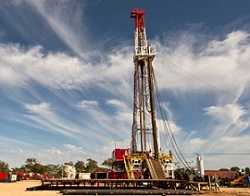FATALITIES IN THE OIL AND GAS EXTRACTION INDUSTRY (FOG)

About Fatalities in Oil and Gas Extraction (FOG)
The NIOSH Fatalities in Oil and Gas Extraction (FOG) is a national database that collects detailed information about oil and gas extraction fatalities in the U.S. It is used to inform NIOSH, industry, and other stakeholder groups, and guide interventions that will prevent future loss of life in this industry. FOG includes all identified fatal events to U.S. land-based and offshore oil and gas extraction workers, irrespective of the industry code of the employer. A full description of the inclusion and exclusion criteria is found below. Fatal events are identified through: 1) preliminary descriptions, citations, and closed investigations from the Occupational Safety and Health Administration’s (OSHA) Occupational Safety and Health Information System (OIS) or the Integrated Management Information System (IMIS); 2) media reports; 3) formal investigations from federal, state, and local agencies; 4) motor vehicle crash reports; 5) emergency responder and police reports; 6) coroner and medical examiner reports; and 7) death certificates. While source documents used to populate FOG may include personal identifiable information (PII), no PII will be included in the FOG database or in any FOG report.
Fatality Inclusion Criteria
- Workers involved in the exploration for crude petroleum and natural gas; drilling, completing and equipping wells; operating separators, emulsion breakers, desilting equipment, and field gathering lines for crude petroleum and natural gas; and all other activities in the preparation of oil and gas up to the point of shipment from the producing property. This includes workers paid on a contract or fee basis (NAICS 211, 213111, and 213112).
- Workers involved in site preparation and related construction activities for oil and gas wells (NAICS 238910).
- Workers involved in specialized freight trucking, local and long distance, that includes hauling of materials for oil and gas extraction activities (NAICS 484220 and 484230).
- Workers involved in performing geophysical surveying and mapping services for oil and gas on a contract or fee basis (NAICS 541360).
- Workers who meet one of the above conditions and who are fatally injured in motor vehicle crashes that occur during non-traditional commutes (i.e., long distance commutes) to the worksite or to temporary lodging camps.
Fatality Exclusion Criteria
- Workers involved in oil and gas pipeline and related structures construction or other midstream and downstream activities (NAICS 22121, 23712, 486, 32411, 42471, 42472, 447, and 4869).
- Non-fatal injuries and illnesses occurring in the oil and gas extraction industry.
Limitations of FOG
FOG does not currently capture all work-related fatalities for this industry. The primary data sources used for case identification are OSHA and media sources. Because most motor vehicle crashes are outside of OSHA’s jurisdiction, those events are likely underreported in FOG. Efforts are underway to improve the identification of motor vehicle crashes and fatalities through appropriate State and Federal agencies. Secondly, fatalities associated with work-related chronic illness are also likely underreported, as the (work-related) underlying cause of illness may not be recognized and recorded; with few exceptions most diseases that can be caused by occupational exposures also have non-occupational causes.
- Page last reviewed: March 17, 2015
- Page last updated: March 17, 2015
- Content source:
- National Institute for Occupational Safety and Health Western States Office


 ShareCompartir
ShareCompartir